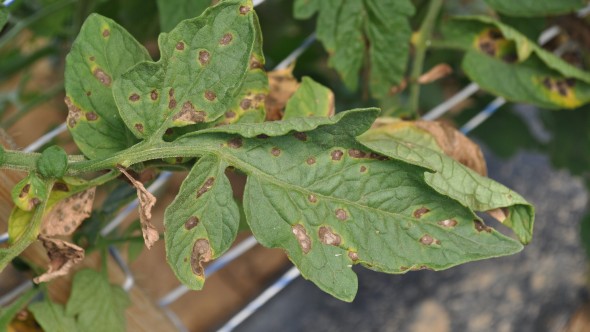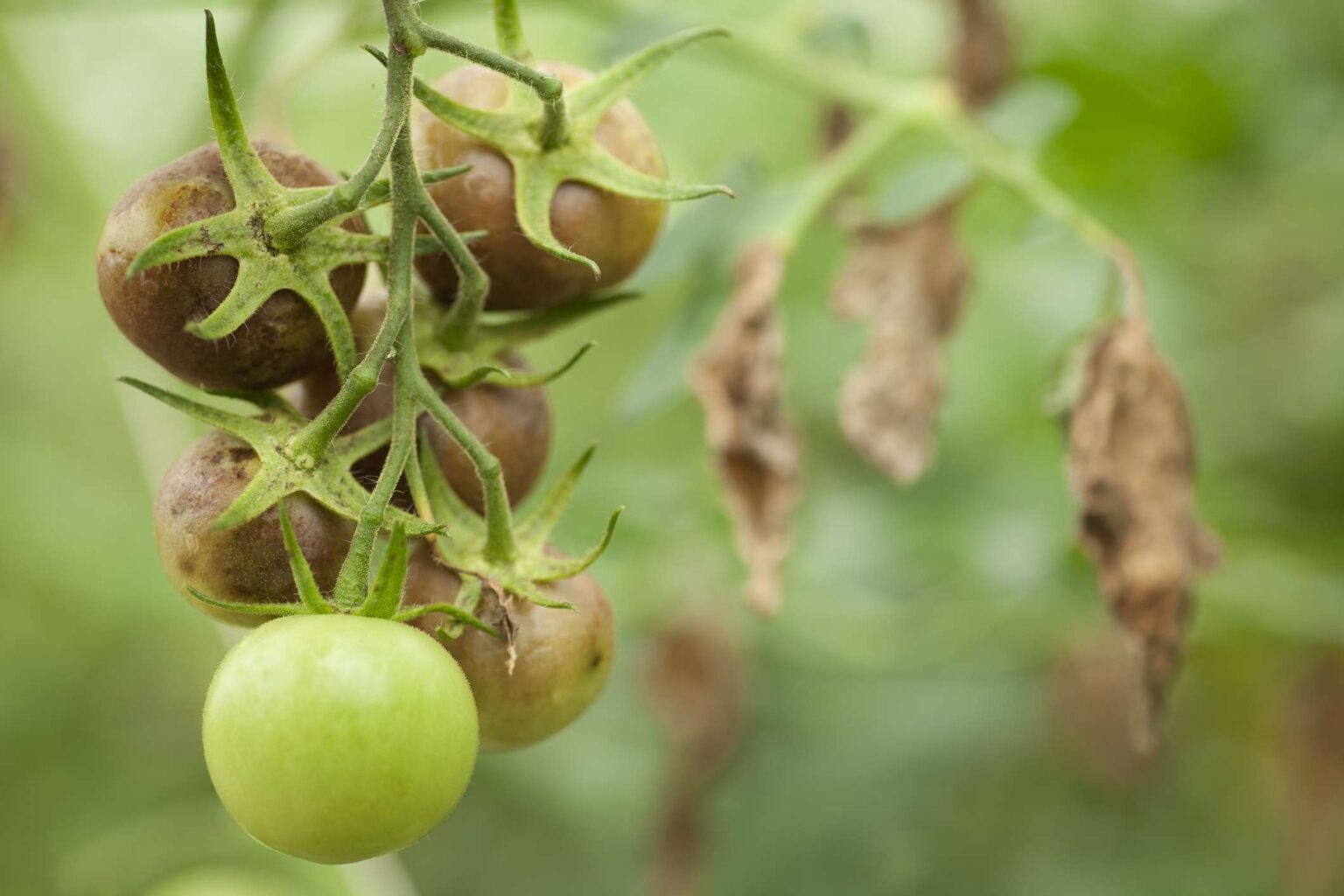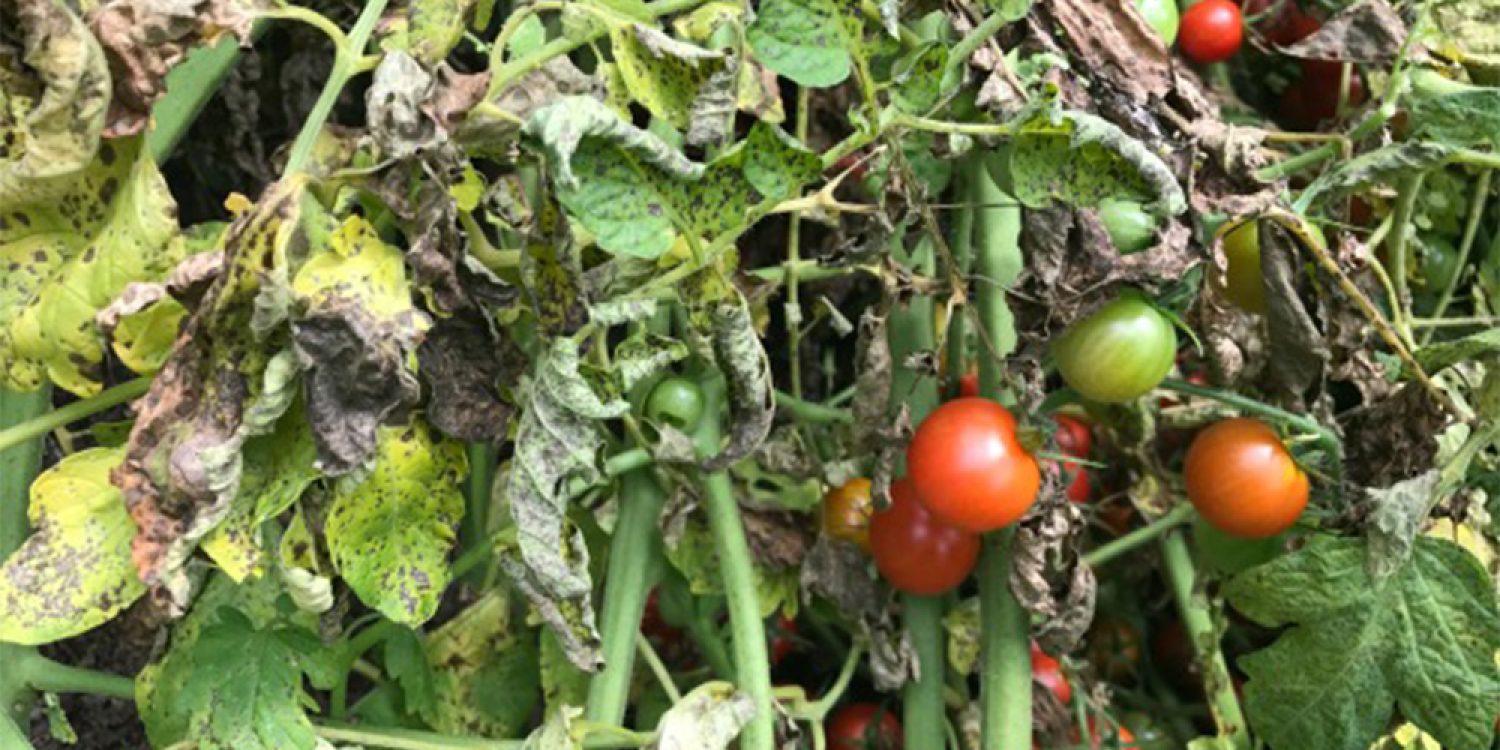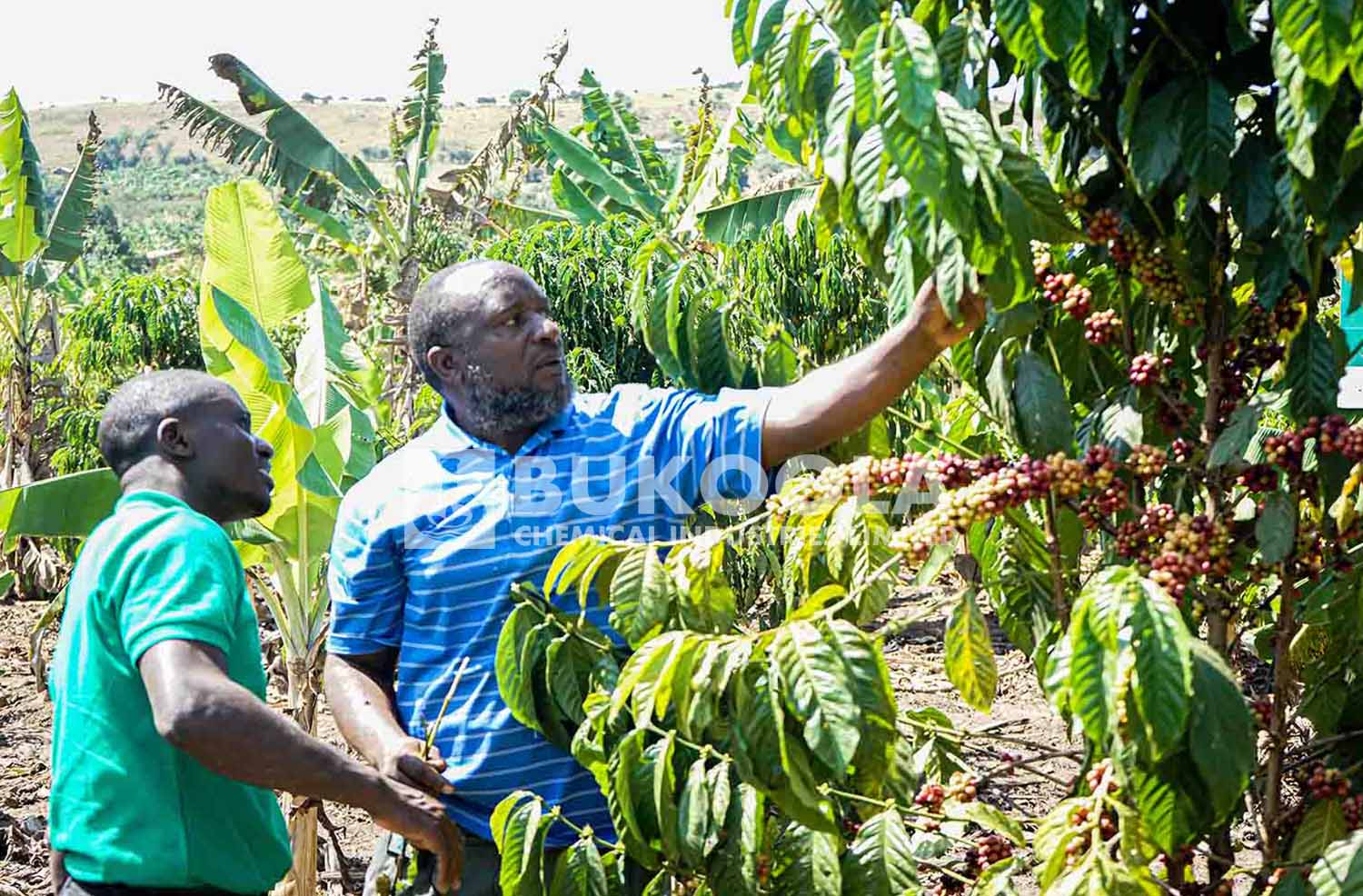Septoria leaf spot, also called Septoria blight, occurs throughout the United States and worldwide wherever tomatoes are grown. This disease can be quite destructive and crop losses of up to 100% have been reported in heavily defoliated fields. Septoria leaf spot is primarily a disease of tomato, but it has been reported on other Solanaceous hosts including eggplant, potato, petunia, horsenettle, and black nightshade.
SYMPTOMS AND DISEASE DEVELOPMENT:
Septoria leaf spot is caused by the fungus Septoria lycopersici. This fungus can attack tomatoes at any stage of development, but symptoms usually first appear on the older, lower leaves and stems when plants are setting fruit. Symptoms usually appear on leaves, but can occur on petioles, stems, and the calyx. The first symptoms appear as small, water-soaked, circular spots 1/16 to 1/8″ in diameter on the undersides of older leaves. The centers of these spots then turn gray to tan and have a dark-brown margin.
The spots are distinctively circular and are often quite numerous. As the spots age, they sometimes enlarge and often coalesce. A diagnostic feature of this disease is the presence of many dark-brown, pimple-like structures called pycnidia (fruiting bodies of the fungus) that are readily visible in the tan centers of the spots.
When spots are numerous, affected leaves turn yellow and eventually shrivel up, brown, and drop off. Defoliation usually starts on the oldest leaves and can quickly spread progressively up the plant toward the new growth. Significant losses can result from early leaf-drop and often leads to the subsequent sunscalding of the fruit when plants are prematurely defoliated.
Septoria leaf spot is favored by warm, wet, humid conditions. Although the fungus can survive in or on seed and in weed hosts, the main source of inoculum is from leaf fragments and other plant debris from diseased plants that “overwinter” in the soil. Under wet conditions, spores (also called conidia) of the fungus are produced in the pycnidia. These spores are spread to healthy tomato leaves by windblown water, splashing rain, overhead irrigation systems, hands and clothing of pickers, cultivation equipment, and several types of insects such as Colorado potato beetles, flea beetles, tomato worms, and aphids.
Following this initial spread and when free moisture is present on the leaves, the spores germinate, infect the tomato tissues, and spots usually appear within 5 days.
Pycnidia subsequently develop in these new spots, more spores are produced, secondary cycles of infection begin, and the disease spreads.


MANAGEMENT:
The effects of Septoria leaf spot can be minimized by following a multifaceted approach to disease management that includes sanitary, cultural, and chemical methods. It is very important to eliminate initial sources of inoculum by removing or destroying as much of the tomato debris as possible after harvest in the fall. Alternatively, in large fields where plant removal is not practical, plant debris can be covered and buried by deep plowing.
These simple sanitary practices can significantly reduce disease development the following year since they remove sources of the fungus that overwinter in the soil. During the growing season, it is important to start with healthy, disease-free transplants. If infected plants are found, rogue the seedlings before transplanting them into the field. It is also helpful to practice crop rotation with a non-Solanaceous crop, if possible.
Since water is important to both the spread and development of this disease, it is helpful to avoid overhead watering or to water early in the day so that the leaves dry more quickly than with nighttime watering. In addition, it is helpful to avoid working with plants when they are wet. Although resistance to Septoria leaf spot has been tentatively identified in several lines of tomato used for breeding, no cultivars with resistance are commercially available to date. Fungicides are very effective for control of Septoria leaf spot and applications are often necessary to supplement the control strategies previously outlined.
The fungicides chlorothalonil and mancozeb are labeled for homeowner use. Since these are protectant materials, they should be applied as soon as symptoms are observed and repeated as necessary when conditions are favorable for disease development and spread.
In Connecticut, the first sprays are usually needed by mid-July. The fungicide labels contain information on dosage rates, spray intervals, days-to-harvest intervals, and safety precautions.
Summary
Tomatoes are probably the most popular vegetable in the home garden. Unfortunately, they are also susceptible to Septoria leaf spot, the most common disease of tomatoes in Connecticut. Caused by the fungus Septoria lycopersici, this widespread disease is also called Septoria blight.
This fact sheet describes how to recognize the symptoms and outlines the conditions that favor disease development and spread. It also includes a discussion of strategies to control and minimize the impact of this disease in backyard plantings.







